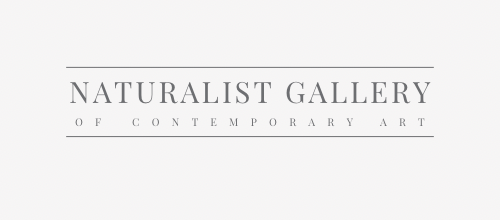Julie Kornblum’s art bridges the gap between material, meaning, and memory.
Julie Kornblum transforms discarded and traditional materials into meaningful works of art, exploring renewal, resilience, and the beauty of overlooked objects.
Through woven threads and discarded plastics, her works invite us to see what is often overlooked. By reimagining materials that span the natural and synthetic worlds, Kornblum tells stories of connection, resilience, and renewal. Each piece draws the viewer into its textures, vibrant colors, and layered meanings.
Explore our curated selection of contemporary artists from around the globe.
Naturalist Gallery offers artist representation internationally. Apply your art.
Elements, Julie Kornblum, 2017, weaving, 30 x 23 in. / 76.2 x 58.42 cm.
In Elements, threads intersect in brilliant grids of red, orange, and deep blues, vibrating like a map of energy or a pulse beneath the surface of the earth. The piece feels alive, as though it’s in constant motion, stretching the eye across patterns that hint at landscapes—sunsets, water, and sky—without ever landing fully on one. Kornblum’s use of symmetry creates balance, while subtle imperfections in the weave remind us that nature, too, is organic and never perfectly uniform. There’s a rhythm here that feels meditative, almost ancient, as though the threads carry something timeless and essential. This work celebrates the beauty of materials—simple fibers elevated into something intricate and resonant.
I'm Still Here, Julie Kornblum, 2015, coiled basketry, 20 x 18 x 14 in. / 50.8 x 45.72 x 35.56 cm.
I’m Still Here is a sculpture made of plastic that feels both lighthearted and deeply sobering. Its structure is playful—like a creature that might stumble out of a surrealist dream—yet its components tell a different story. Plastic cups, lids, and bottles dominate the form, objects that would otherwise be destined for a landfill. The piece wears its history: each material carries a mark of its past life, scuffs, cracks, or the quiet dullness of being cast aside. The title speaks with quiet power—I’m Still Here. It is the voice of both the material and perhaps the artist, echoing resilience and persistence. Kornblum doesn’t erase the plastic’s identity. Instead, she gives it another chance, drawing attention to our waste and inviting us to imagine a world where nothing—no material, no effort—is forgotten.
Let's Call This, Julie Kornblum, 2024, coiled basketry, 12 x 26 x 21 in. / 30.48 x 66.04 x 53.34 cm.
Bright, chaotic, and full of life, Let’s Call This feels like a celebration of color and form. Plastic bottle caps and found materials spill outward in a shape that feels alive—almost like coral or a bloom frozen mid-explosion. This work doesn’t hide its origins as discarded plastic; instead, it embraces its past with vibrant, unapologetic energy. There’s a joy here, but also a quiet unease. The piece holds a mirror to the excess of our world, making something beautiful out of what we’ve deemed useless. Its title—Let’s Call This—feels open-ended, as though Kornblum is letting the viewer decide what they see: a joyful work of art, a commentary on consumption, or perhaps both.
Julie Kornblum’s works—Elements, I’m Still Here, and Let’s Call This—show how art can transform materials into meaning. Whether through thread or plastic, her pieces invite us to reflect on what we value, what we discard, and what we choose to give a second life. Kornblum’s art doesn’t just celebrate beauty; it challenges us to see potential in what we overlook, reminding us that everything—whether threadbare or thrown away—still has a story to tell.
Learn more About Naturalist Gallery of Contemporary Art.
You may also find the following articles helpful:
How Globalization is Changing the Art World
Eco-Art Installations That You Can Visit Right Now
How Social Media Has Created a New Breed of Art Critic
Why Do Activists Target Art? Examining Climate Protest Tactics
The Impact of War on Art: How Conflict Shapes Creativity and Culture
Rebel Artists: How Art Movements Have Challenged Political Regimes
The Ethics of the Museum: Who Decides What Gets Displayed?




